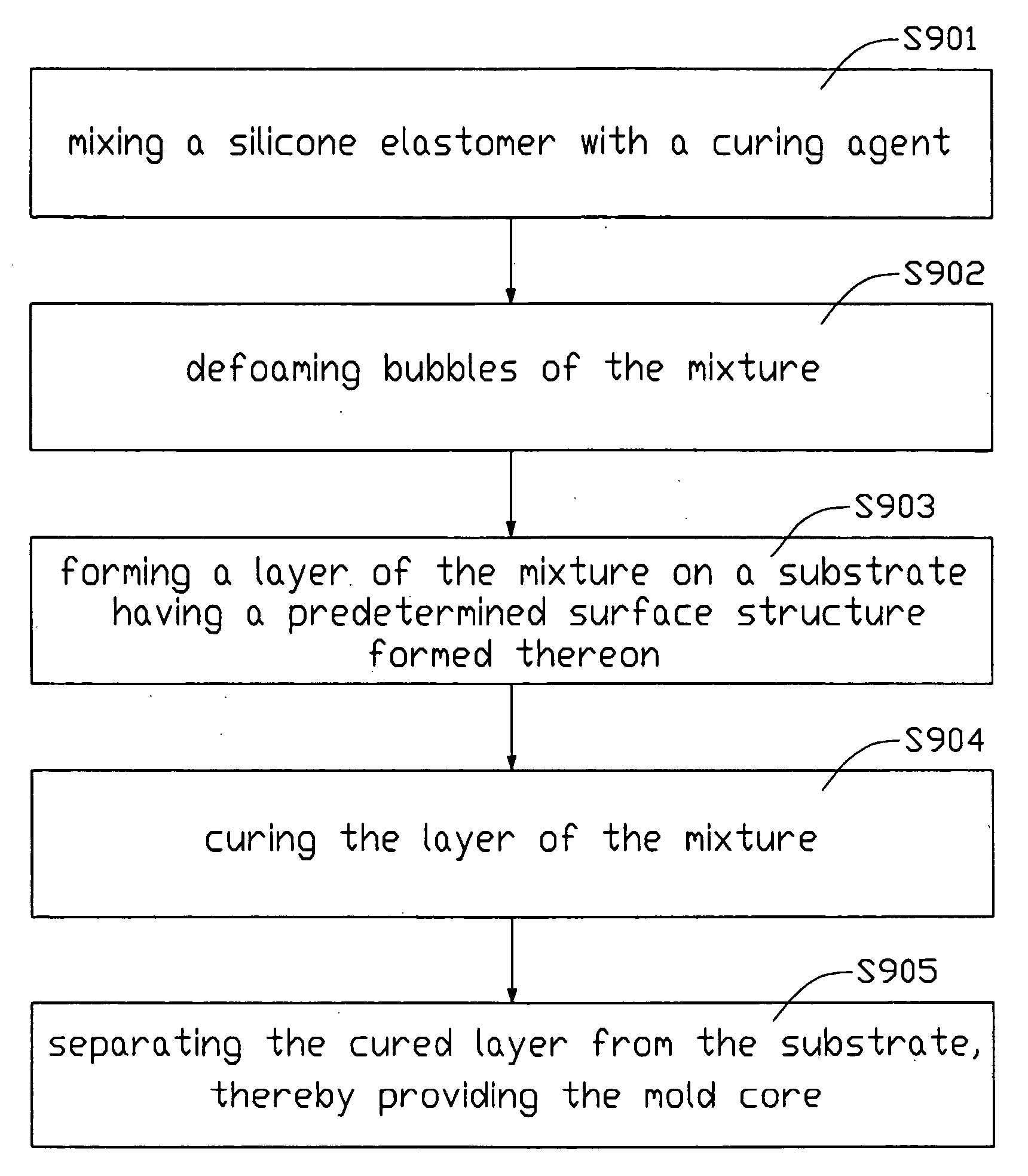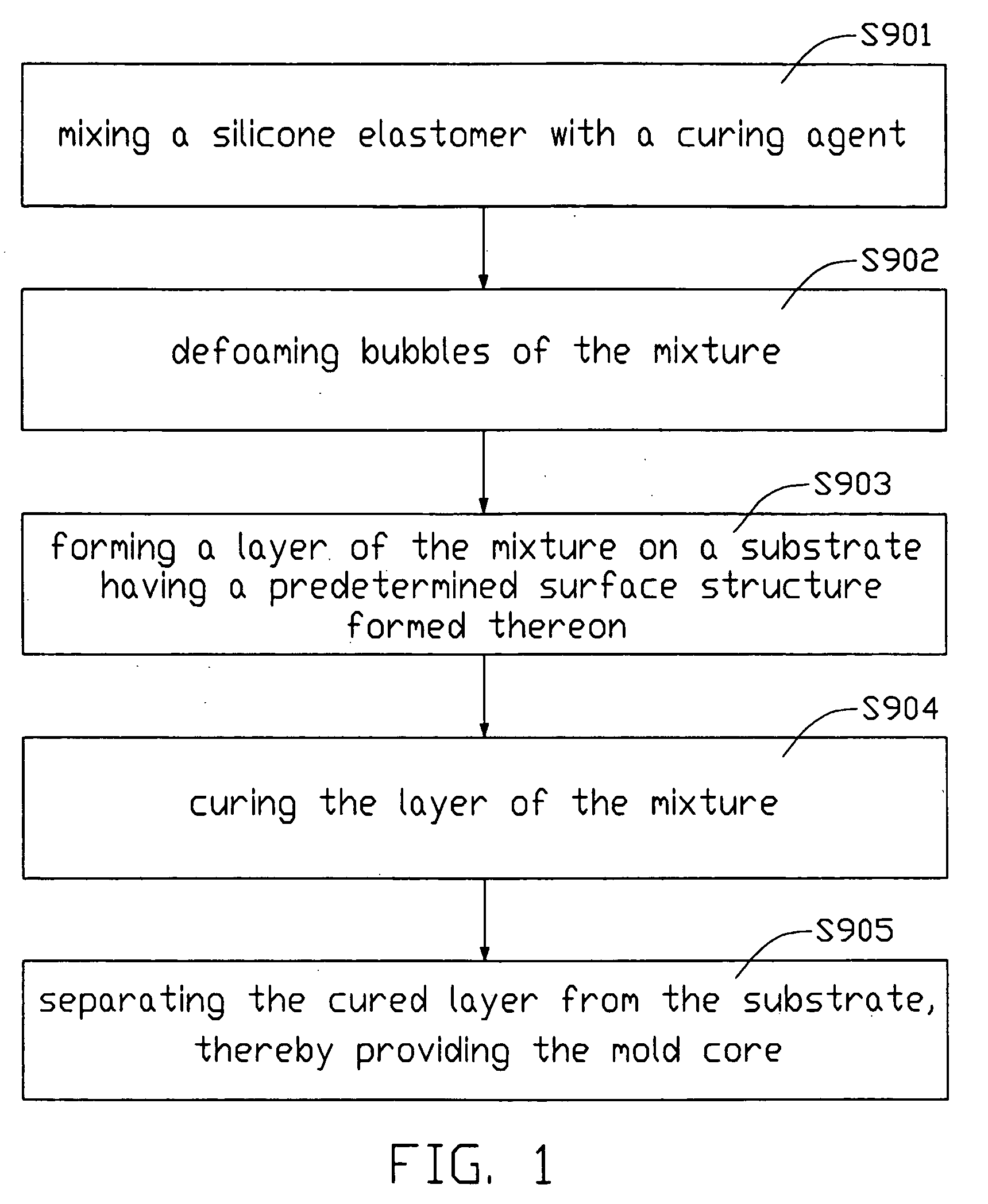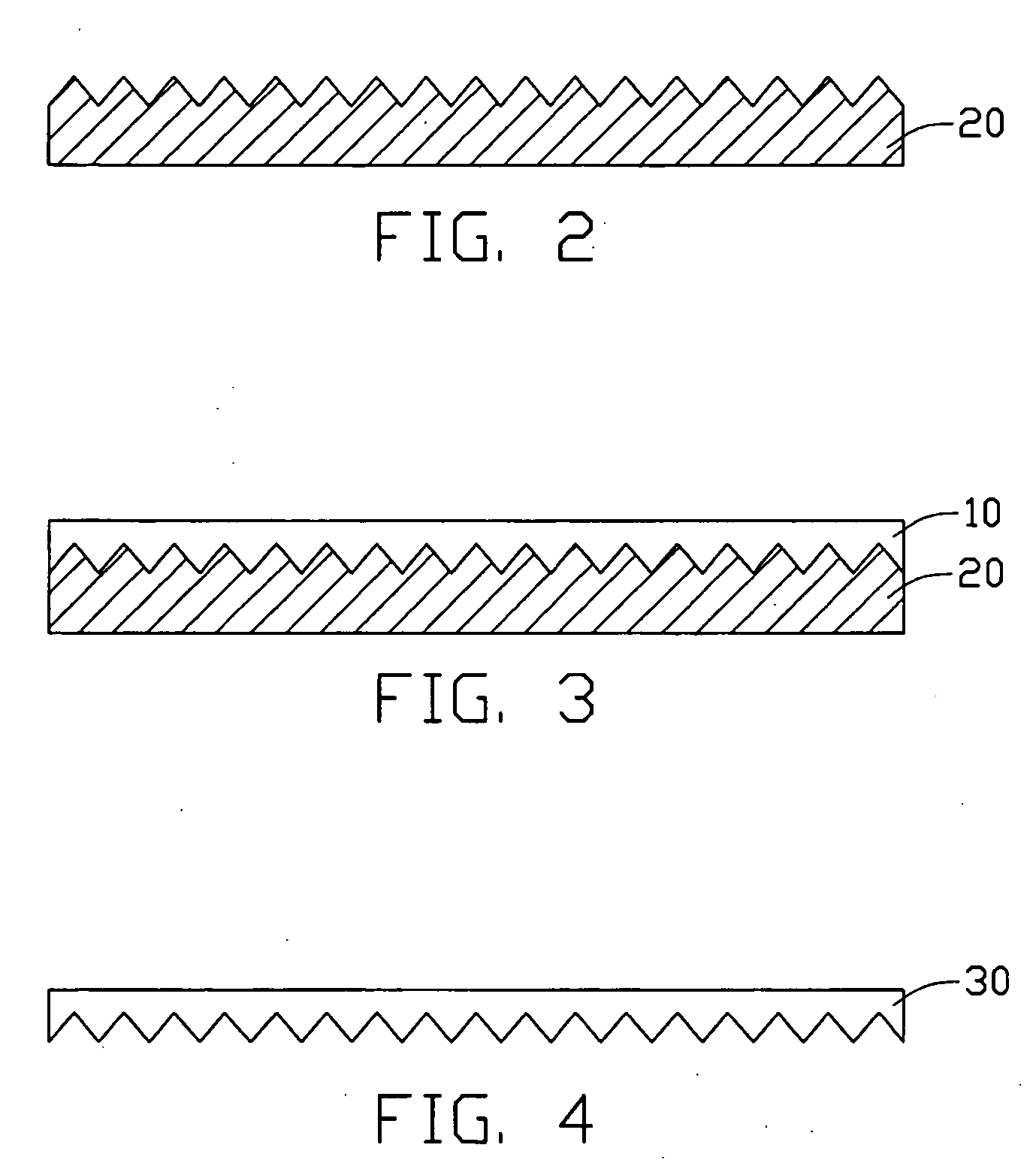Method for fabricating mold core
- Summary
- Abstract
- Description
- Claims
- Application Information
AI Technical Summary
Benefits of technology
Problems solved by technology
Method used
Image
Examples
Embodiment Construction
[0018] As shown in FIG. 1, a method for fabricating a mold core in accordance with the present invention includes the following steps: mixing a silicone elastomer with a curing agent to form a mixture (step S901); defoaming bubbles of the mixture (step S902); forming a layer of the mixture on a substrate having a predetermined surface structure formed thereon (step S903); curing the layer of the mixture (step S904); and separating the cured layer from the substrate, thereby providing the mold core (step S905).
[0019] In step S901, the silicone elastomer is polydimethyl siloxane, and the curing agent is an epoxy resin. A ratio by weight of the polydimethyl siloxane with respect to the epoxy resin is in the range from 5:1˜20:1, and preferably 10:1.
[0020] In step S902, the bubbles are defoamed in a vacuum environment, such as in a vacuum machine. The mixture is held at a working pressure of 0.05 torr or less, and at normal room temperature.
[0021] Referring also to FIGS. 2 and 3, in s...
PUM
| Property | Measurement | Unit |
|---|---|---|
| Temperature | aaaaa | aaaaa |
| Temperature | aaaaa | aaaaa |
| Temperature | aaaaa | aaaaa |
Abstract
Description
Claims
Application Information
 Login to View More
Login to View More - R&D
- Intellectual Property
- Life Sciences
- Materials
- Tech Scout
- Unparalleled Data Quality
- Higher Quality Content
- 60% Fewer Hallucinations
Browse by: Latest US Patents, China's latest patents, Technical Efficacy Thesaurus, Application Domain, Technology Topic, Popular Technical Reports.
© 2025 PatSnap. All rights reserved.Legal|Privacy policy|Modern Slavery Act Transparency Statement|Sitemap|About US| Contact US: help@patsnap.com



